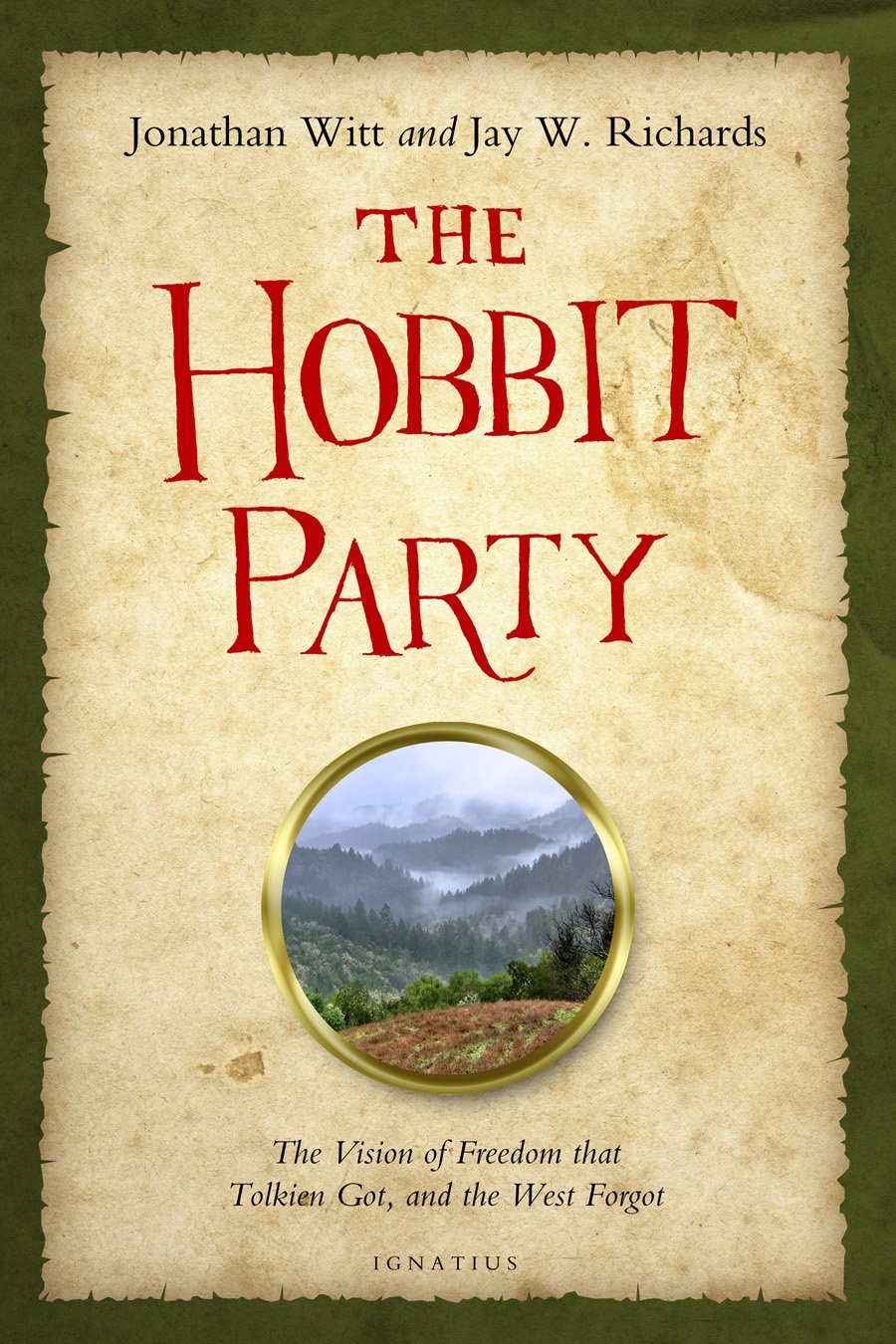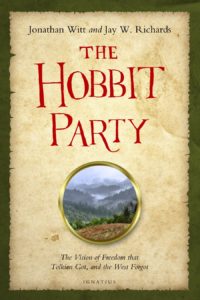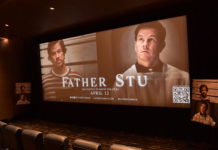[dropcap type=”4″]A[/dropcap] few days before Christmas, the final installment of the screen adaptation of J.R.R. Tolkien’s The Hobbit hit theaters. Not many people know that Tolkien was Catholic or that his religion was the central focus of his intellectual life.

The timing couldn’t be much better for the new book, “The Hobbit Party: The Vision of Freedom That Tolkien Got, and the West Forgot” by Jonathan Witt and Jay W. Richards.
For those of you who don’t know about Tolkien, “The Hobbit” is the story of a mythical, very human-like creature called a “hobbit” who occupies a mythical place called Middle Earth, a place that is, of course, a metaphor for our own world. The hobbit is one Mr. Bilbo Baggins, who is called out of a very comfortable mediocrity — anyone see themselves? — into a world of adventure, risk-taking and magnificent peril by the King of the Dwarves, the King’s men, and Bilbo’s good friend, Gandalf, who is a wizard. The story seems simple but was expanded into four books — three of them rather lengthy — and six full-length reduced movie versions of the books that have since become classics.
Get the picture?
The first thing about “The Hobbit Party” that is joyfully apparent is that the collaboration was an act of pure love. Witt and Richards were childhood friends — both now with doctorates — who were introduced to Tolkien in middle school. Witt and Richards point out that J.R.R. Tolkien had a deep understanding of Scripture and Catholic teaching, especially Catholic social teaching. Tolkien abided by the principles of Church social teaching and wove them into his monumental classic.
[quote_box_left]
The Hobbit Party: The Vision of Freedom That Tolkien Got, and the West Forgot
Publisher: Ignatius
Authors: Jonathan Witt and Jay W. Richards
Release date: October 2014
Length: 232 pages, hardcover
Price: $18.55
ISBN: 978-1586178239
Order: Everywhere
[/quote_box_left]
Witt and Richards are keen to have us understand that Tolkien’s vision of freedom lay not in humanity or central government, but in the moral advocacy espoused by the Church as created by God.
The whole battle of Middle-earth was steeped in the modernity of Tolkien’s early twentieth century and is even more vivid and vital for us in the postmodernity of our early 21st century. So many Catholics today believe that centralized government is the only effective instrument of social change. This violates the social principle of subsidiarity which holds that the most local form of government action is the best because it is closer to people helping people and better fulfills the commandment given by Christ. But the pews are filled with people who have never taken a look at Church social teaching.
Tolkien saw the centralizing of government as abhorrent and maximally detrimental to human freedom, which finds its fullness in the commandments, parables, and teachings of Christ Jesus. Tolkien portrays the place in which Bilbo lives as a place of freedom: restrictions are few, business is steeped in the freedom inherent in the goodness of the person and government is rooted in a higher calling.
The whole plot of this first book of Tolkien’s is to portray the story of the Dwarves, Bilbo, and Gandalf seeking the treasure of Lonely Mountain, a treasure stolen, and guarded by an unfriendly, sophisticated dragon named Smaug. The sophistication of the dragon is reflective of the sophistication of the social elite, academia, and, in our case, progressives. Justice is sought in the return of this treasure. Once the dwarves reach the mountain, and a particular precious gem is stolen back by Bilbo, the dragon wreaks its vengeance on the nearby town. In the town, a poet rises up and slays it but not until the town is destroyed.
The whole sense of treasure becomes the main motif: its loss, a total disruption of society and order, and its restoration is the restoration of justice. We can see the loss of the knowledge of Christ to the forces of modernity (and postmodernity) and the havoc wreaked upon all of creation.
Bilbo also recovers a ring during his exploits in the dragon’s lair. This ring — the one ring to rule them all — becomes the focus of all the following exploits in Middle Earth.
Witt and Richard illustrate the actions, plots, motifs, symbols, and themes of all these other magnificent stories to give us a clear understanding of the threats we face today. These illustrations are not simply Witt and Richard’s interpretation of Tolkien, but are Tolkien’s own intentions as borne by the many letters he wrote regarding his work.








